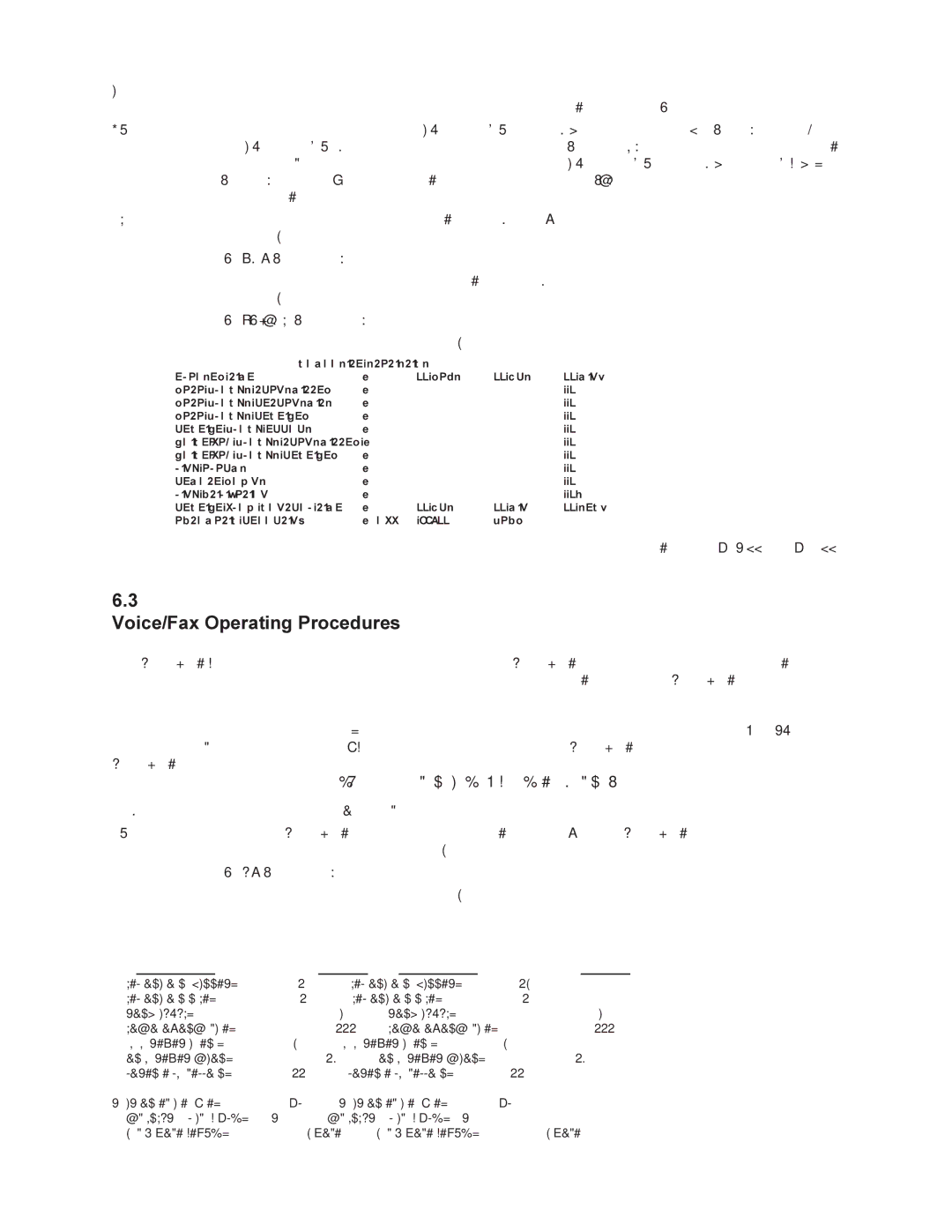8To reconfigure a channel based on your actual channel requirements, enter commands as described in Chapter 5 of
this manual. To save new parameters, you must again execute an AT&W command.
9If you are downline loading remote parameters,
10To return to local parameter display and control, execute a Select Local | Parameter command by entering the |
following: |
|
AT&SL (hit Return) |
|
11To use the status display and auto reporting feature, execute the Status Reporting command by entering the following:
AT#A/BS0 (hit Return)
The following will be displayed on your system monitor:
COMPOSITE STATISTICS |
|
| ||
ELAPSED TIME | : | 00 DAYS | 00 HRS | 00 MIN. |
DATA BLOCKS TRANSMITTED | : |
|
| 0 |
DATA BLOCKS RETRANSMITS | : |
|
| 0 |
DATA BLOCKS RECEIVED | : |
|
| 0 |
RECEIVE BLOCK ERRORS | : |
|
| 0 |
VOICE/FAX BLOCKS TRANSMITTED : |
|
| 0 | |
VOICE/FAX BLOCKS RECEIVED | : |
|
| 0 |
LINK ALARMS | : |
|
| 0 |
REMOTE DOWNS | : |
|
| 0 |
LINK UTILIZATION | : |
|
| 0% |
RECEIVE FLOW CONTROL TIME | : | 00 HRS | 00 MIN | 00 SEC. |
AUTOMATIC REPORTING | : OFF | 19200 | BAUD |
|
To select the bps rate and time interval at which the above status screen will appear, execute a #RBxx and #RTxx commands as described in Chapter 5 of this manual.
6.3
Voice/Fax Operating Procedures
The Voice/Fax Operating Procedures begin with displaying the Voice/Fax Channel parameters and then executing the commands to change the default parameters to fit your specific voice or fax needs. The Voice/Fax Channel parameters are displayed for both channels and contain general parameters for each channel such as destination channel number through silence suppression. The local and remote interface types define the specific type of interface and the conditions that govern that interface. Not all the parameters for a particular interface apply, such as 2 or
Table 6-2. Voice/Fax Operating Procedures
StepProcedure
1If you wish to display the Voice/Fax Channel Parameters, execute the List The Voice/Fax Channel Parameters command by entering the following:
ATVL (hit Return)
The following will be displayed on your system monitor:
LOCAL VOICE/FAX PARAMETERS CHANNEL1 LOCAL VOICE/FAX PARAMTERS CHANNEL 2
PARAMETER | STATUS | PARAMETER | STATUS |
DESTINATION CHANNEL: | 01 | DESTINATION CHANNEL: | 02 |
DESTINATION NODE: | 01 | DESTINATION NODE: | 01 |
LINK A/B/D: | A | LINK A/B/D: | A |
DIGITIZING RATE: | 16000 | DIGITIZING RATE: | 16000 |
OUTPUT LEVEL ATTEN.: | 12 | OUTPUT LEVEL ATTEN.: | 12 |
INPUT LEVEL GAIN: | 03 | INPUT LEVEL GAIN: | 03 |
SILENCE SUPPRESSION: | 00 | SILENCE SUPPRESSION: | 00 |
LOCAL INTERFACE TYPE: | FXS | LOCAL INTERFACE TYPE: | FXS |
GROUND/LOOP START (FXS): | LOOP | GROUND/LOOP START (FXS): | LOOP |
2 OR 4 WIRE (E&M): | 2 WIRE | 2 OR 4 WIRE (E&M): | 2 WIRE |
